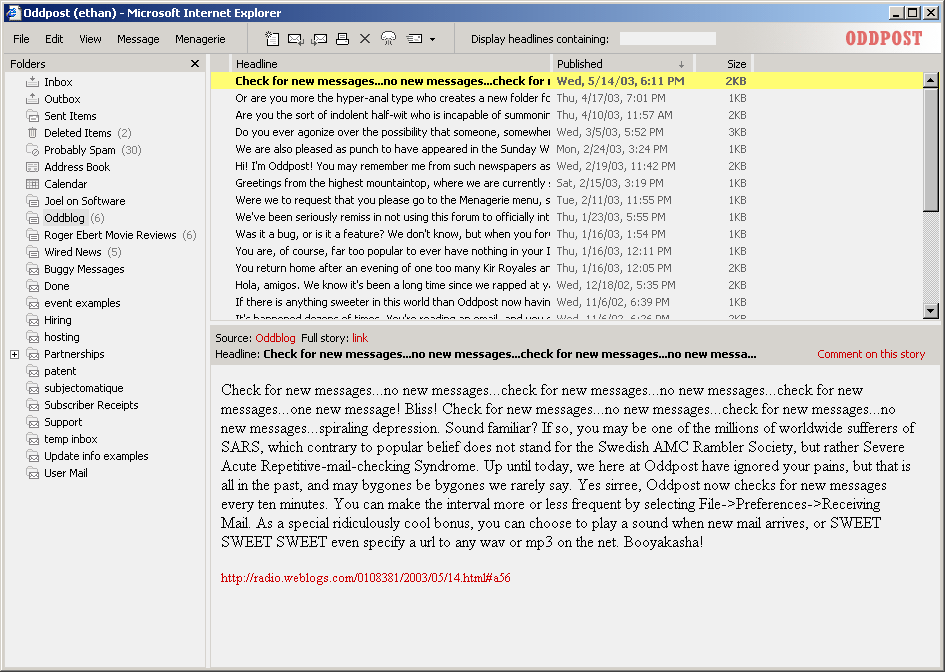2 minutes estimated reading time
Before Oddpost
When you think about Oddpost, you have to cast your mind back almost two decades in 2002, the web was a very different place. In order for applications to do anything they would have to refresh the whole page. You couldn’t dynamically edit a document with other colleagues like you can with Google Docs for instance. Which made applications like time tracking, or updating the basket on an e-commerce site a bit of a pain.
The catalyst for change for app like performance in the browser was a webmail client called Oddpost.

Oddpost.com
Oddpost was different in a number of ways to anything else at the time. At first glance, it looked like a three pane desktop mail client, there was less navigation controls than your webmail interfaces at the time. Which heralded a very different design approach in subsequent web 2.0 companies. It is hard to articulate now, Gmail wouldn’t arrive for another two years and when it did it was invite only which meant that for the average Joe it took a while to come around. There was no download or application required to make it work (like a Java applet for instance). Oddpost, instead used technologies which are now humdrum, but a decade ago were the web equivalent of a revolution. Dynamic HTML, XML, and Simple Object Access Protocol (SOAP) allowed individual elements of a page to be updated that provided a desktop app-like experience.
Design
Oddpost’s design approach didn’t lend itself to advertising that would slow down it’s dynamic interface and its method of updating components of a page rather than the full page adversely affected the page view metric advertisers cared about at the time. Storage was more expensive than it is now, so it made sense that Oddpost was a paid-for product. In return for your subscription of $30/year got you a whopping 30MB of storage in your email box and an integrated RSS reader (rather like mail.app with OSX or Outlook with Windows). In addition to the unique interface Oddpost offered support for both POP3 and IMAP standards which allowed access over an email client. IMAP allowed you to keep the files on the system providing you with a standard view using the web interface, your own computer, PDA (using Bluetooth and your cell phone as a wireless modem) or early smartphones like the Nokia 7650 and Nokia 6600 which came out in 2003. I was unusual at the time in having an IMAP email account, the entry cost for this service was purchasing an Apple computer.
Oddpost was rough around the edges. It would be another few years before the metal lid of an Apple laptop would be as common as it is now, so it wasn’t as much of an issue that Oddpost only worked on Internet Explorer (version 5 or better) for Windows. The search functionality only did the headlines of messages not the body text. The company was eventually acquired in April 2004 by Yahoo! as it looked to bolster its position as an email provider against the then new Gmail service.